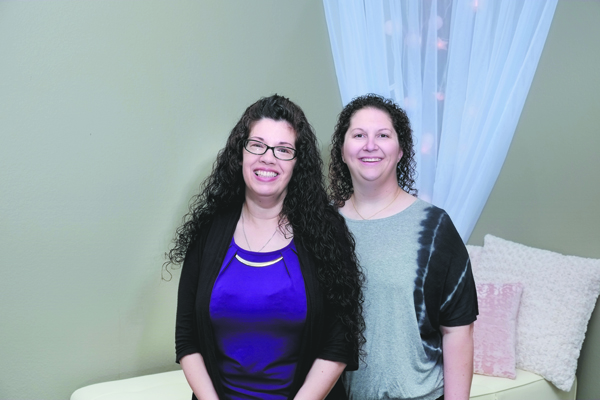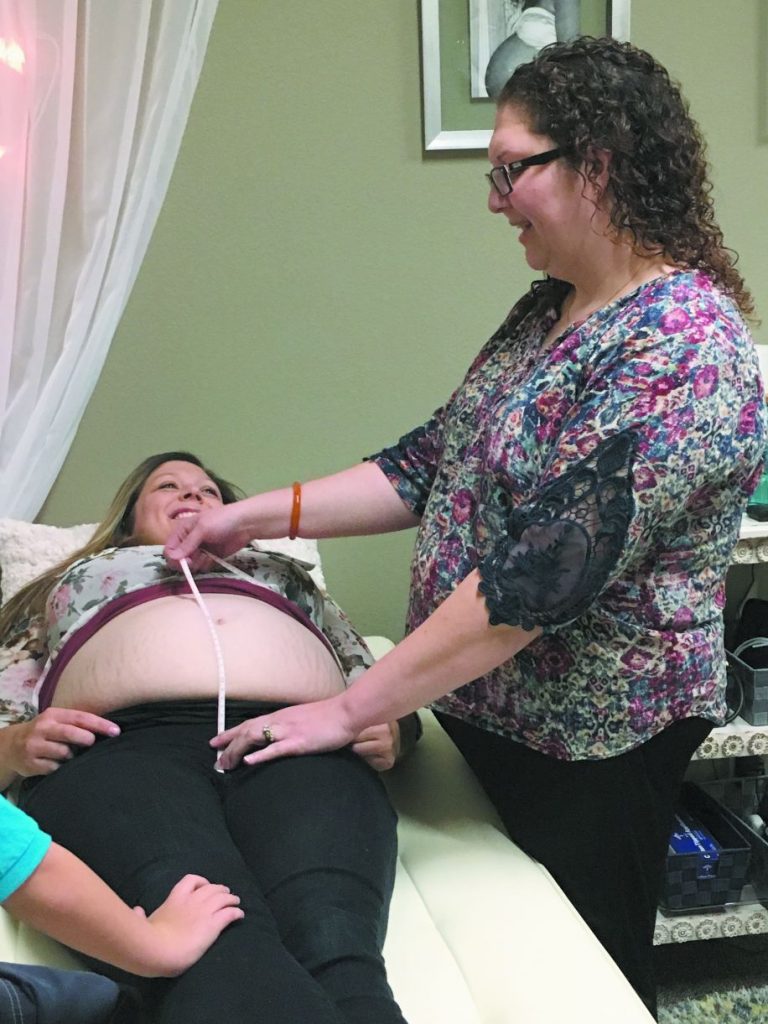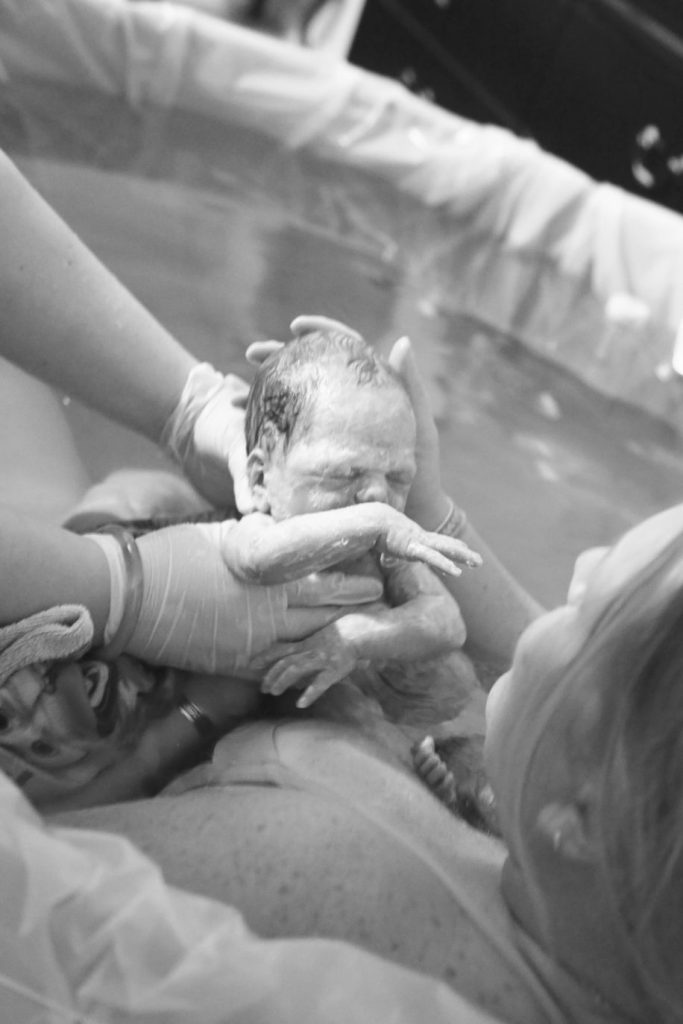By Kelly Oden
The practice of midwifery has been around since ancient times. From biblical references to the ancient Greeks and from the middle ages to modern times, women have guided other women through their pregnancies and assisted in the labor and delivery of their children. As technology and medical advancements grew, the model of childbirth in America also grew and changed. After World War II, the hospital became the primary choice for most women giving birth. While hospital births serve a vital purpose for many women, Kerry Pham and Tina Babinski believe women should know that they do have other options. In 2016, the pair opened Stand and Deliver, a women’s well-care and birthing services practice.
Stand and Deliver offers traditional birthing services—prenatal care and home births, newborn assessments, lactation support, postpartum visits and more. Both Pham and Babinski are certified nurse practitioners with a specialty in midwifery, so they can also offer women’s well-care services such as routine screenings (PAP, breast exams, etc.), contraception, primary care (yearly physical exam, screenings, etc.), and treatment of minor illnesses (UTI, sinus infections, dermatological conditions, strep throat, etc.)
With over twenty years combined in nursing, the two met while working on a high-risk delivery as nurses in a hospital setting. They struck up an immediate friendship and found they both had an interest in midwifery. After attending a graduate program in nursing with a specialty in midwifery, which included more than 675 clinical hours, Pham and Babinski each earned their masters degrees and became certified nurse midwives.
Midwifery means “with women,” and Babinski sees midwifery as the practice of caring for women throughout their lifespan. “It’s not just about pregnancy and birth. We can do well-women care and we can be their primary care provider as well,” she says. Pham and Babinski believe that pregnancy and birth are sacred, beautiful, and normal physiological processes that typically occur without complication. They do not see them as medical emergencies or cause for fear. Rather, they are natural and profound experiences that will transform a woman’s past, present, and future. Their mission is to empower and inspire women to trust in the process and their own bodies.
Most women contact them as soon as they become pregnant and after an initial meeting they have their first medical appointment at 10 weeks. In a healthy pregnancy, the midwife typically replaces the obstetrician. “It’s really two different models of care,” says Babinski. “There’s the midwifery model of care and the medical model of care—two different specialties. Our specialty is in normal pregnancy and normal childbirth whereas an obstetrician is more for anything that deviates from the normal. In other countries that have better maternal, fetal outcomes than we do—like the UK—all women see a midwife unless their pregnancy was to stray outside of the normal. At that point they would go see an obstetrician. We don’t see women with chronic medical problems or anything that would make the pregnancy high risk.”
Another way in which the midwife model differentiates from the traditional medical model is in the inclusion of the father or partner as much as possible. “The dad or the partner is extremely involved,” says Pham. “When we are doing a home birth we try to be in the background. We want it to be a family experience. We want the mother and partner to be bonding and for the partner to assist in labor and be a main support. We step in as doula to encourage or provide massage if needed. If mother and partner are doing a fine job on their own, we don’t interrupt that. We let mom do her thing and let her body do what it is meant to do. In the hospital setting, the partner is there in the room, but they are kind of pushed to the side and the focus is on the woman, the nurses, and the doctor. It shouldn’t be that way. It should be about them and their family. We are just there to make sure they are safe throughout the process and to recognize anything that may deviate from normal in order to keep them safe and provide timely and appropriate transfer to a hospital if necessary. We are not there to be the star of the show. This is their birth and their experience that they are going to remember forever.”
Personal, in-depth care is another hallmark of the midwifery model. “A lot of women who seek us out want a relationship with their care provider,” says Babinski. “They don’t want to be a number. They don’t want to be Mrs. Brown or Mrs. Jones. They want to be Tina or Kerry. In a typical obstetrician appointment, you go in and you wait 30 or 40 minutes and then you see the doctor for maybe five or 10 minutes. Our typical appointment is an hour. A small portion of that is spent checking vitals and all of medical needs, but a lot of time is spent talking—how’s the pregnancy, what’s going on? It’s a lot of emotional support as well. By the time that nine months of pregnancy is through, they know us and they are very comfortable with us. When you are dealing with a very intimate part of a women’s body and a very intimate part of healthcare, I think that comfort needs to be there.” Pham agrees, saying, “A lot of women choose this method of birth because they are seeking a certain type of experience. We feel like we are partners in your healthcare. Yes, we have a certain level of education, but it’s our job to tell you what the evidence-based medicine is and what the risks and benefits are. It’s your job to choose and our job to support that choice.” Pham and Babinski keep their patient count low so they do not sacrifice the time and commitment necessary to build relationships with their patients. And something expectant mothers love—they are available 24 hours a day via phone or text.
Pham and Babinski are also trained to take care of newborns, which they do for the first 72 hours after delivery. Once the baby is born, they do a full newborn assessment and they stay with mom for 6 hours after delivery to monitor them both and to make sure the baby is nursing and everything is going well. They come back 18 hours after that to check on mom and baby again—to weigh the baby, to check for jaundice or other issues, and to schedule an appointment with the pediatrician. They also help with lactation support. “Breastfeeding is an extremely critical part of home birth because it allows the uterus to contract down and stop the bleeding,” says Pham. “We definitely stay in the home until that is well established.”
Stand and Deliver also offers home water births in a medical grade birthing tub. “A lot of women choose this option,” says Babinski. “The water helps with pain because of buoyancy and the counter pressure from the water.” Pham adds that, “The warm water also increases circulation to the uterus, which decreases pain and increases oxygen to the baby. It’s a very gentle birth. Babies sometimes don’t even realize they’ve been born. We keep the temperature of the water the exact same as the mother’s internal temperature.”
Statistically, home births are relatively safe, but they put an emergency plan in place at 36 weeks, just in case. If a deviation from normal does arise, the two do not hesitate to call an ambulance. They both worked in a high-risk unit and have seen many types of complications and are well-versed in spotting potential issues. They are certified in neonatal resuscitation and they bring all necessary emergency equipment and medication.
Although Pham and Babinski are advocates of home birth and the midwifery model, they also want women to have the ability to make the right choice for them. “We want women to know they have different options,” says Babinski. “We are not anti-hospital. For some women, that is where they need to be and that’s great. We just want women to know that this option is here. Women never forget their birth story. So it’s important that they make the right choice for their birth experience—make it an experience that they want to remember.”
For more information, visit standanddelivermidwifery.com http://standanddelivermidwifery.com/


